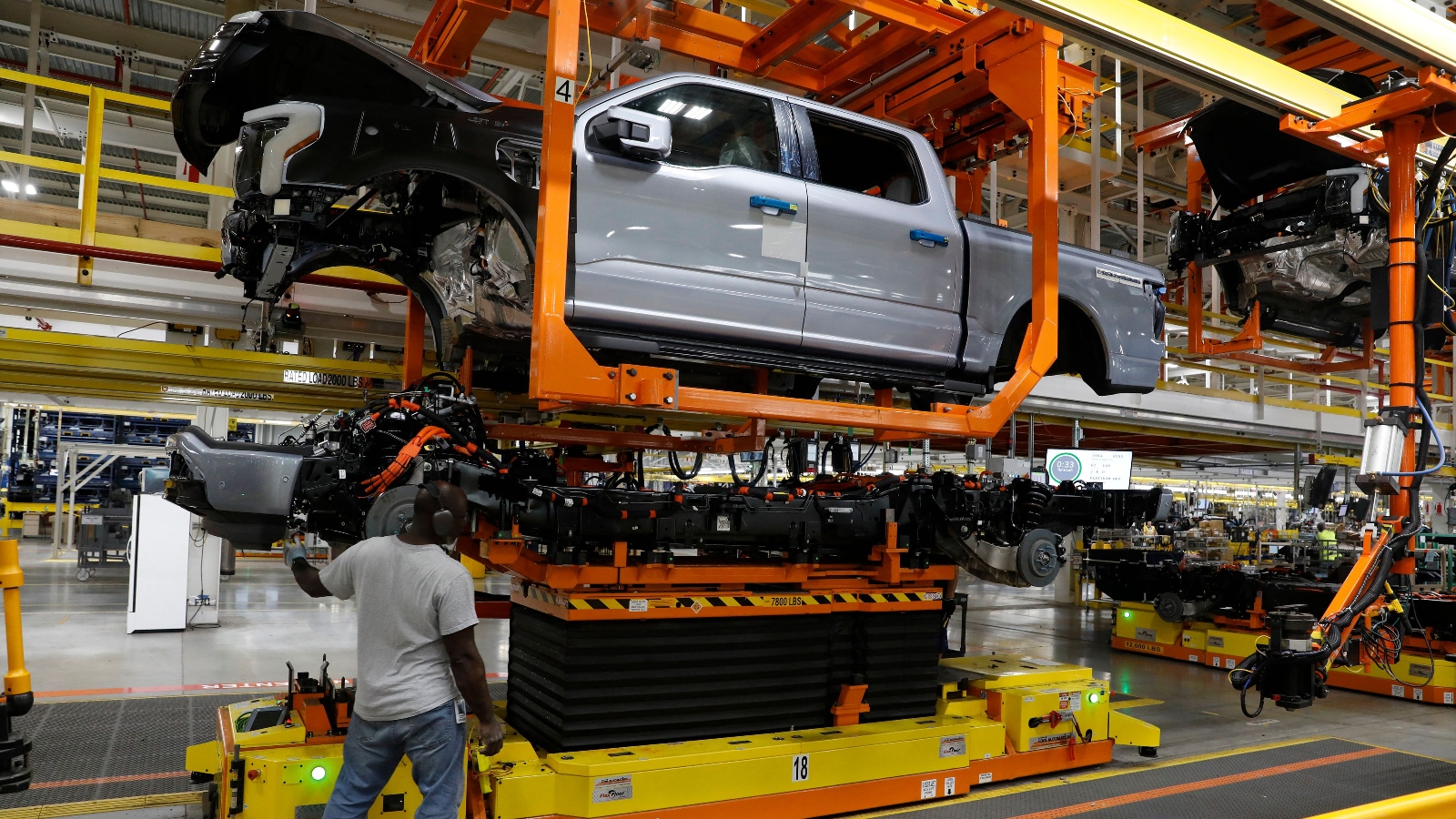Plug in hybrids make a lot of sense during this transitional period of rapidly advancing battery technology and incomplete deployment of charging infrastructure.
Building a small, relatively cheap factory for manufacturing a small number of super expensive, pavement princess trucks is less risky than making a large investment in a megafactory capable of producing a meaningful number of affordable cars. That big car factory would need the market to demand its products for a long time for the investment to pay off. For example, if there’s a big leap in battery tech in the near future, the car manufacturer would take a loss - either they continue to offer outdated EVs and sell fewer than projected (only utilizing a fraction of the factory’s maximum output, while still paying taxes and maintenance on a larger facility), or they throw away their expensive, brand new factory tools and build expensive new ones for manufacturing cars with the new batteries.
Meanwhile, charging an EV at home still isn’t possible for a lot of people, and quick charger stations aren’t available yet in a lot of areas. However, a plug in hybrid can be adequately charged overnight by a standard home electrical outlet, letting it act like an EV for quick trips around town. Meanwhile, longer trips into not-yet-electrified areas are still possible thanks to the ICE, and the range can be quickly topped up at a gas station. More plug in hybrids on the roads also generates demand for building charging infrastructure - if someone just has $5 to spend on gas, they could get more miles by spending it on electricity at a quick charger.
Have automakers gotten so used to fat profit margins from SUV sales, particularly during the post-pandemic boom, that they consider anything that requires investment to be “insufficiently profitable”? Or has the high-return mindset of Silicon Valley infected Detroit as well?
Indeed,
“Ford just reported a massive loss on every electric vehicle it sold”
https://www.cnn.com/2024/04/24/business/ford-earnings-ev-losses/index.html
That’s R&D cost divided over a small number of vehicles, not the cost of material and labor that goes into each vehicle. It only looks bad on paper.
For example, if you invest $100 in R&D and it costs $1 to produce each car, then the first car out of the factory costs $101. Sell that first car for $10 and you’ve “lost” $91. But if you can sell 100 cars, then each car only costs $2, not $101, and now on paper it looks like you’ve made $8 on each sale.
Time will tell if Ford made the right decisions about what kind of car to engineer and if consumers will continue to buy it long enough to make back the one time R&D expenses. That would happen faster if their margins on labor and material is high, like it is on trucks and SUVs, which makes those a safer investment.
@Delta_V going back many years I’ve heard the description of the automobile industry problem as “overcapacity.”
Too many companies in too many countries are fighting for too few buyers, compared to that production capacity. Like, if you ran all plants atlnd all shifts it would be way too many cars.
Now that’s happening in EVs right?
To make money, on specifically the Mustang, Ford it has to sell a lot of Mustangs. Unfortunately everyone else is trying the same thing at the same time.
I’m skeptical of the problem being that simple. I think if that were the only issue, we would have cheaper cars.
Part of the rational for producing high margin trucks and SUVs is that investors demand the most margin possible out of every unit of production capacity. If a factory can only turn out 100 vehicles a year, its more profitable to turn out an expensive SUV that only 100 people can afford, compared to selling 100 cheap sedans that thousands of people want but you just can’t produce enough of them.
If there were overcapacity, then in a vacuum, it would make sense to put it to work turning out low margin cars that are in high demand and making some money with that capacity instead of no money.
But its hard to predict years in advance when your factories are going to have excess capacity, and to know when to begin years long engineering projects so the vehicles you’re going to want to produce will have their designs finished in time to fill those gaps. And its extra risky to begin those kinds of long range projects during times of rapidly changing regulations of ICE vehicles, and rapidly advancing tech for EVs that might invalidate years of engineering and factory tooling investments because you can’t sell the vehicle you planned to produce for a long enough time to make back your investment and start seeing a profit. Not that I’m anti-regulation - I like breathing clean air and drinking clean water.
At least in Europe, there are a few big reasons. First and foremost combustion engines are more profitable. EV require a lot of R&D and factory investment, which is not needed for old school combustion engines. The other part is a shrinking car market. Covid means a lot more work from home and at least in Europe, you generally have the option of doing a lot of things on foot, bicycle or public transport. At the same time, when you drive less you do not go for a new car as quickly. Then you have cost. Due to supply chain issues battery prices have not fallen quickly enough. There was a bit of time, when they were stable. Good news is that they are falling again.
In other words, this is a difficult transition and some car makers are going to fail.
And the world will be better for it.
Spending 20% of MSRP on incentives is not profitable or sustainable





